What Are Heat Pumps and How Do They Work?
Is a heat pump an air conditioner? This is a common question for homeowners looking for efficient heating and cooling solutions. While both systems regulate indoor temperatures, they function differently. A heat pump can both heat and cool, while a traditional air conditioner only cools. Understanding their differences can help you choose the best option for your home. Let’s explore how they work and which one suits your needs best.
A heat pump is an advanced HVAC system designed to provide both heating and cooling in a highly energy-efficient way. Unlike traditional heating and cooling systems that generate heat or cool air, a heat pump works by transferring heat from one place to another. This makes it an eco-friendly and cost-effective solution for maintaining indoor comfort throughout the year.
How Do Heat Pumps Work?
The operation of a heat pump relies on the principles of heat transfer and refrigeration cycles. The system consists of three key components:
Outdoor Unit (Compressor & Coil) – Absorbs or releases heat.
Indoor Unit (Air Handler & Coil) – Distributes heated or cooled air inside.
Refrigerant & Expansion Valve – Transfers heat between the indoor and outdoor units.
The heat pump system works differently in cooling mode and heating mode:
1. Cooling Mode (Acts Like an Air Conditioner)
In warm months, a heat pump functions just like a traditional air conditioner:
Absorbs heat from indoors: The refrigerant absorbs heat from inside your home.
Transfers heat outdoors: The heat is released outside via the outdoor coil.
Circulates cool air indoors: The indoor coil distributes cool air into the home.
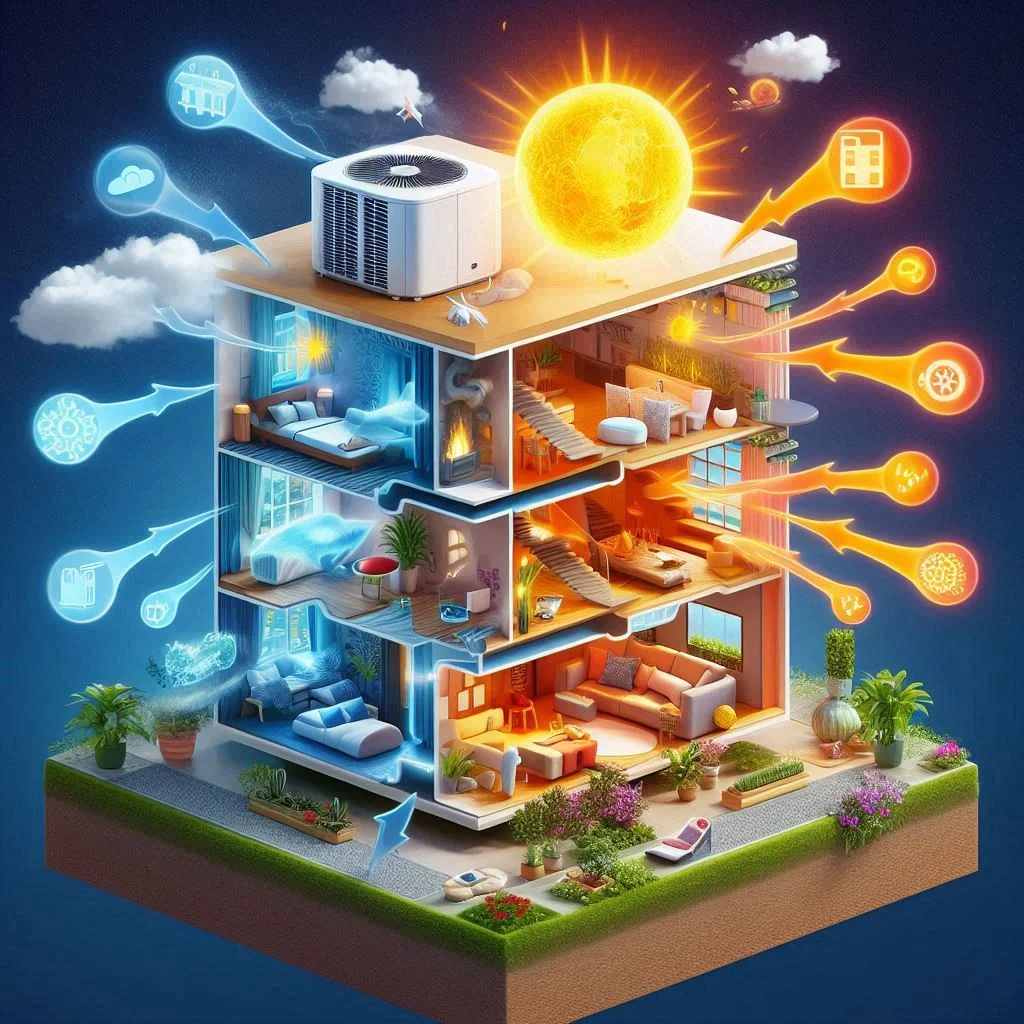
2. Heating Mode (Reverses the Process to Heat Your Home)
Unlike conventional furnaces that generate heat, a heat pump extracts existing heat from outdoor air (even in cold temperatures) and transfers it indoors:
Extracts heat from outside air: The outdoor coil absorbs heat from the air.
Compresses the refrigerant: The heat is intensified by compressing the refrigerant.
Releases warm air indoors: The indoor coil distributes the heat into the home.

3. The Reversing Valve: The Key to Dual Functionality
The reason a heat pump can switch between heating and cooling is because of a special component called the reversing valve. This valve changes the direction of the refrigerant flow, allowing the system to work as either a heater or an air conditioner.
Advantages of Heat Pumps Over Traditional Systems
Energy Efficiency – Uses significantly less electricity compared to furnaces or electric heaters.
Eco-Friendly – Reduces carbon footprint by transferring heat instead of burning fuel.
Lower Operating Costs – Saves money on energy bills compared to separate AC and heating systems.
Year-Round Comfort – Provides both heating and cooling with one system.
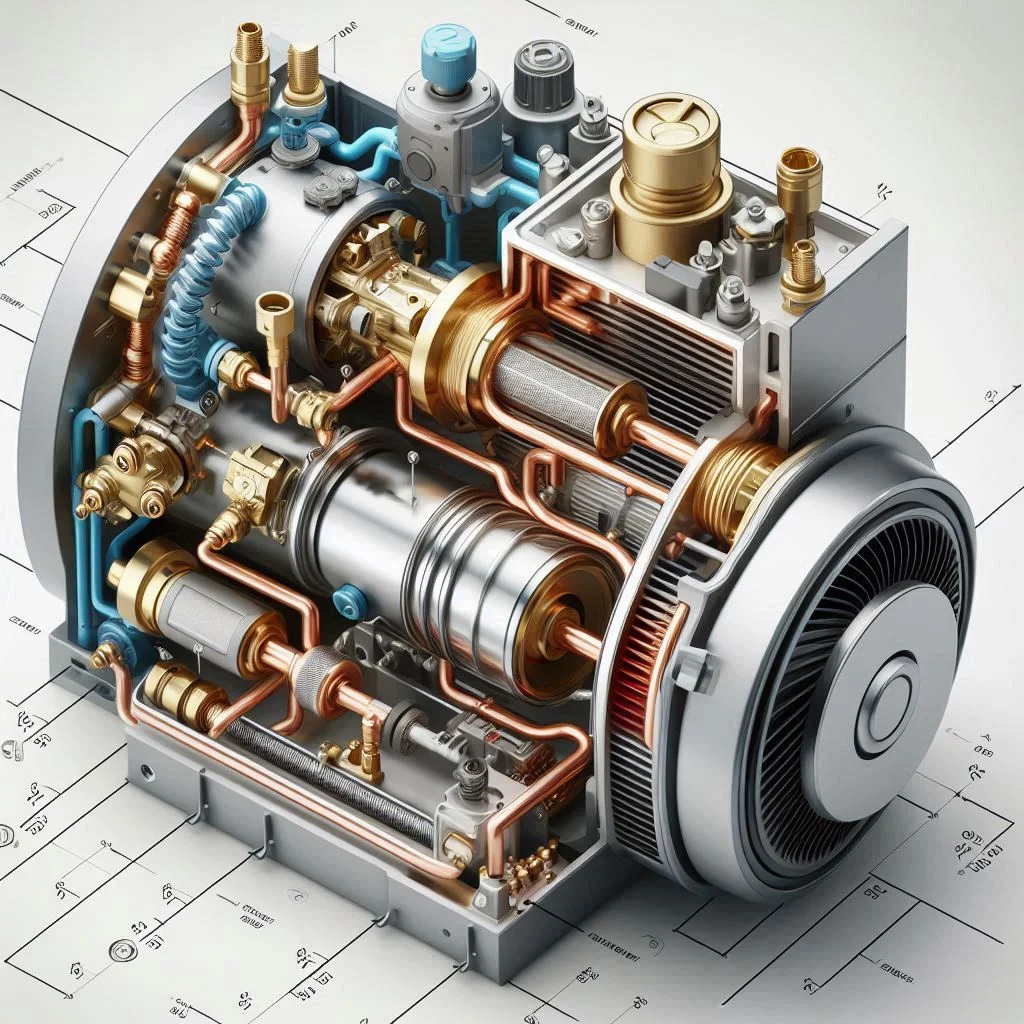
What Is Air Conditioning and How Does It Work?
Air conditioning is an essential technology that provides cooling, humidity control, and air filtration, ensuring a comfortable indoor environment. Whether in homes, offices, or vehicles, air conditioners help maintain optimal temperatures during hot weather by removing excess heat from indoor spaces.
Definition of Air Conditioning
What Is Air Conditioning?
Air conditioning (AC) is the process of cooling and dehumidifying air to maintain a comfortable indoor temperature. It works by removing heat from inside a building and transferring it outside, creating a cooler atmosphere.
Key Functions of an AC System:
- Cooling: Lowers indoor temperatures.
- Dehumidification: Removes excess moisture from the air.
- Ventilation & Filtration: Improves indoor air quality by filtering dust and pollutants.
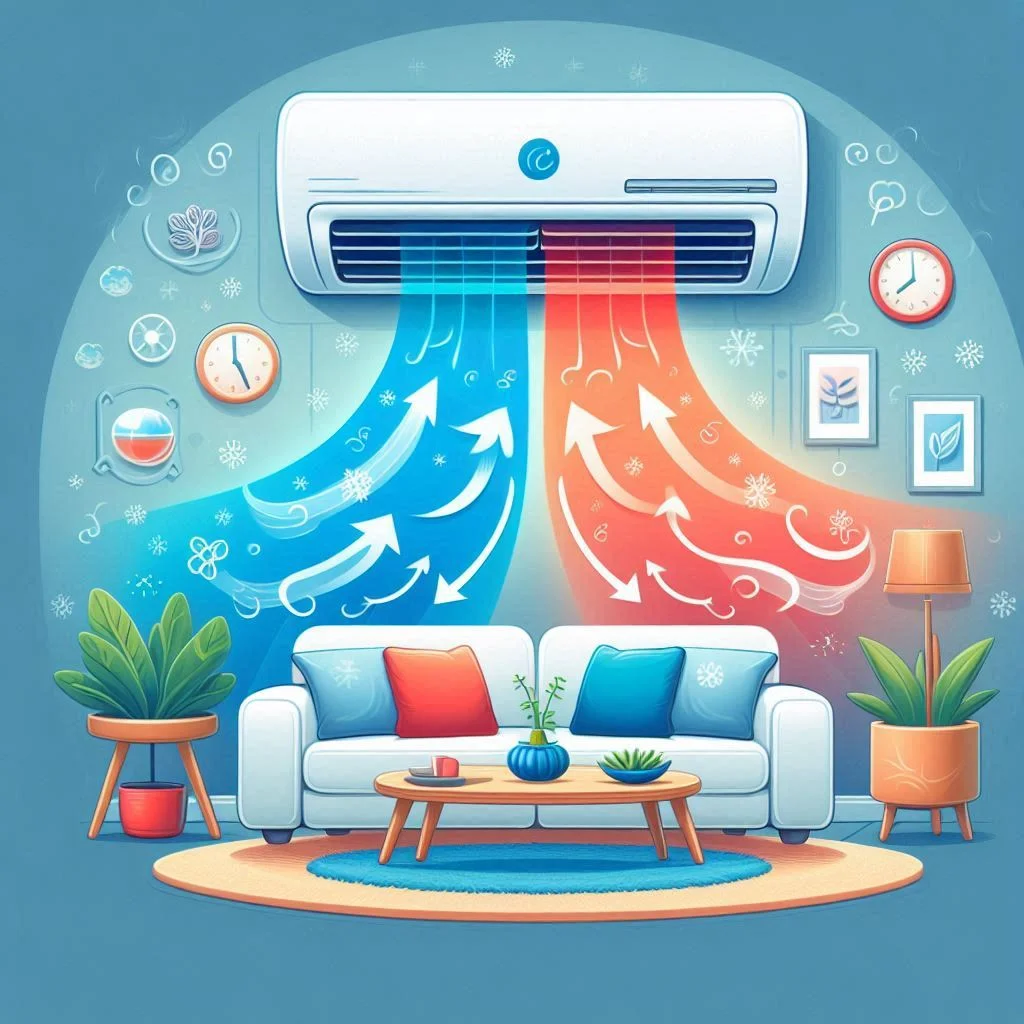
How Traditional Air Conditioners Function
Air conditioners use a process called the refrigeration cycle, which involves absorbing indoor heat and releasing it outside. This is achieved using a special fluid called refrigerant that circulates within the system.
Step-by-Step Working of an Air Conditioner:
Absorbing Heat from Indoors:
- The indoor coil (evaporator coil) absorbs heat from the room.
- The refrigerant inside the coil evaporates, turning from a liquid into a gas.Compressing the Refrigerant:
- The compressor (located in the outdoor unit) compresses the gas, increasing its temperature and pressure.
- This prepares the refrigerant for releasing the absorbed heat outside.
Releasing Heat Outdoors:
- The outdoor coil (condenser coil) expels the heat outside.
- The refrigerant cools down and turns back into a liquid.
Circulating Cool Air Indoors:
- The fan blows air over the indoor coil, which now contains cold refrigerant.
- This cools down the air, which is then distributed throughout the room.
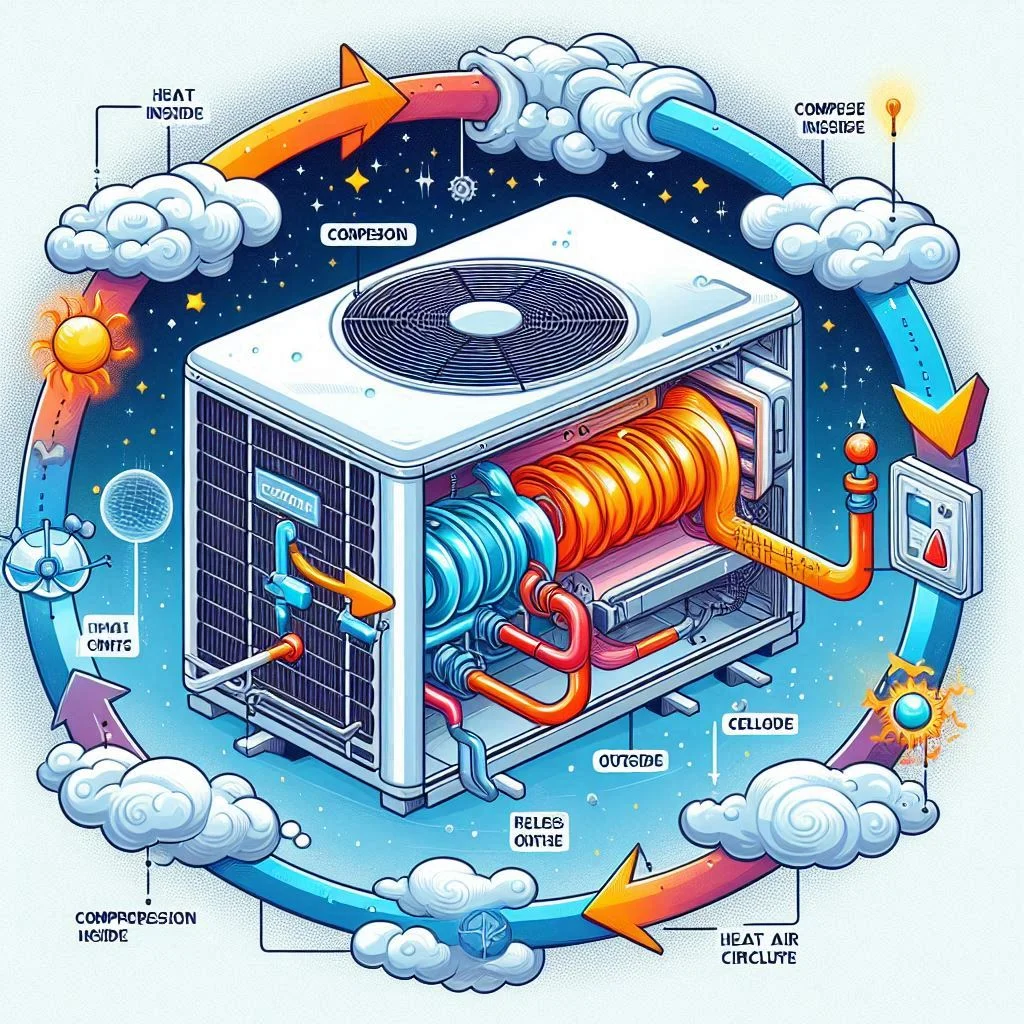
Key Components of an AC System
An air conditioner consists of several essential components, each playing a crucial role in the cooling process.
1. Evaporator Coil (Indoor Coil) – Absorbs heat from indoor air.
2. Compressor – Pressurizes and heats the refrigerant gas.
3. Condenser Coil (Outdoor Coil) – Releases heat outside.
4. Expansion Valve – Controls refrigerant flow and lowers its pressure.
5. Fan & Blower – Helps distribute cool air inside and release warm air outside.
6. Thermostat – Regulates temperature by turning the AC on and off as needed.

Heat Pump vs. Air Conditioner: Key Differences
When choosing between a heat pump and an air conditioner, it’s important to understand their differences in cooling performance, heating capabilities, and best use cases. While both systems provide efficient cooling, heat pumps offer the added benefit of heating during colder months. Let’s dive into the key distinctions to help you make the best choice for your home.
Comparing Heat Pumps and Air Conditioners in Cooling Performance
How Do Heat Pumps and Air Conditioners Cool a Home?
Both heat pumps and air conditioners use the same refrigeration cycle to cool indoor air:
Absorbing Heat from Indoors – The evaporator coil extracts heat from the air inside your home.
Compressing the Refrigerant – The compressor increases the temperature and pressure of the refrigerant gas.
Releasing Heat Outdoors – The condenser coil expels the heat outside, cooling the refrigerant back into a liquid.
Circulating Cool Air Indoors – The fan blows cooled air back into the home.
Cooling Efficiency:
- Heat pumps and air conditioners have similar efficiency levels in warm weather.
- Both systems rely on SEER (Seasonal Energy Efficiency Ratio) ratings to measure cooling efficiency.
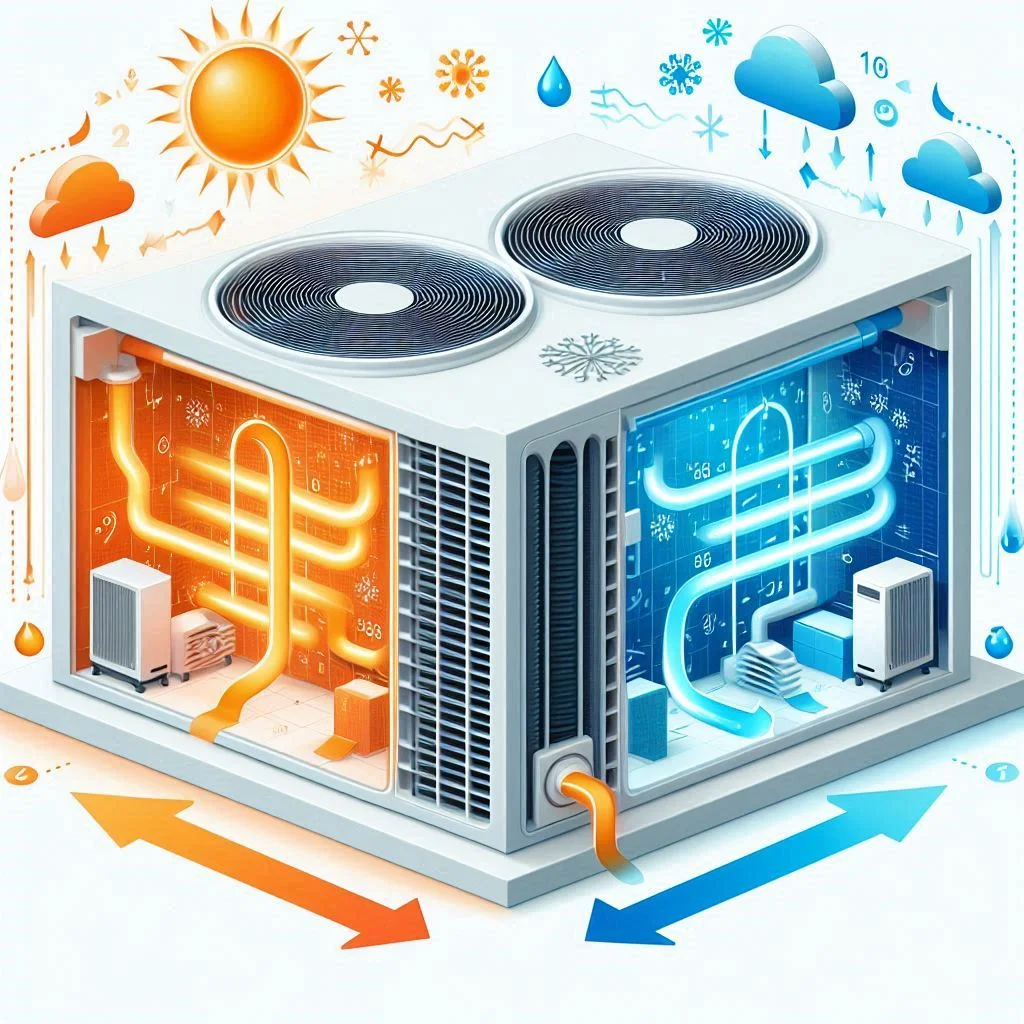
How Heat Pumps Can Reverse Function to Provide Heating
The Major Difference: Heat Pumps Work in Reverse
The biggest advantage of a heat pump over an air conditioner is that it can also provide heating in colder months.
How a Heat Pump Heats a Home:
Absorbs Heat from the Outside Air – Even in cold temperatures, the outdoor coil extracts heat from the air.
Compresses the Refrigerant – The compressor increases the temperature of the refrigerant.
Releases Warm Air Indoors – The indoor coil distributes warm air inside your home.
The Reversing Valve: The Key to Dual Functionality
- Heat pumps contain a reversing valve, allowing them to switch between cooling and heating modes.
- This makes them a year-round solution for both hot and cold climates.
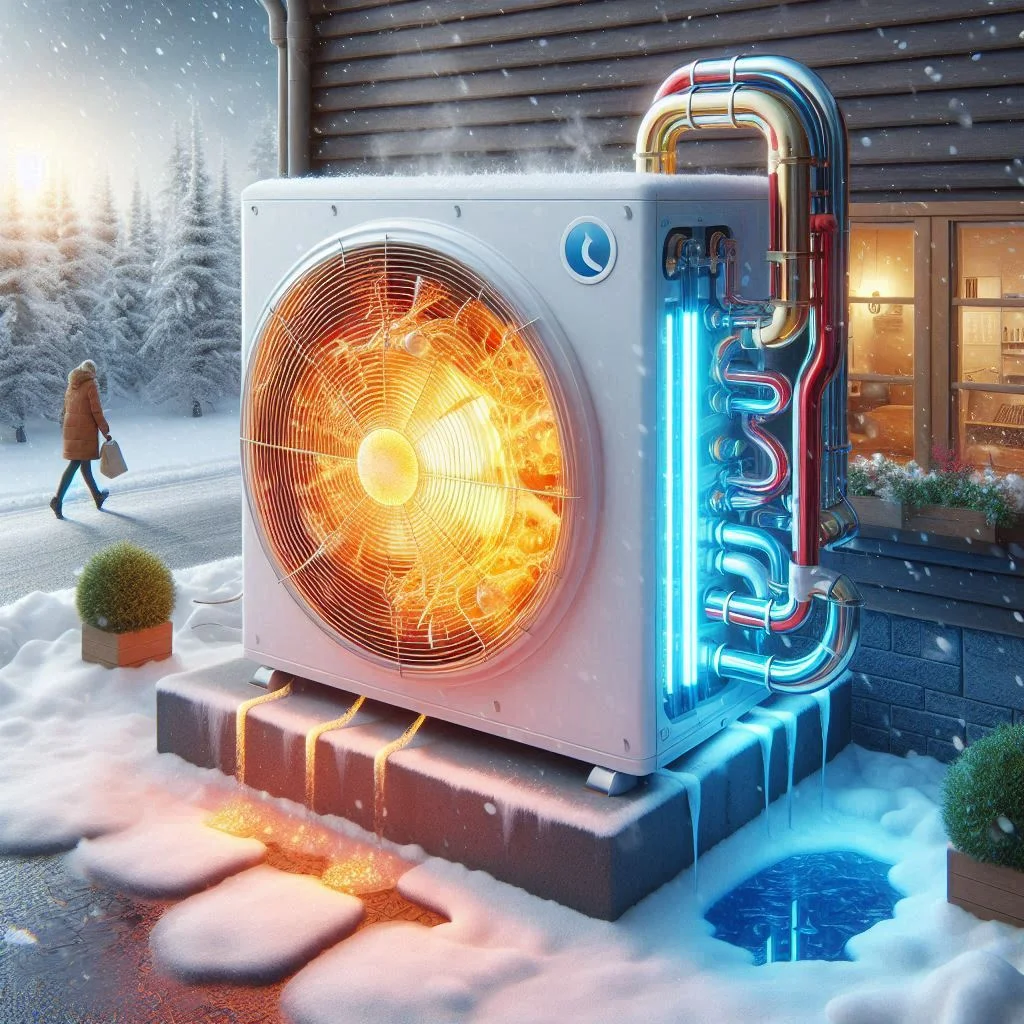
Best Use Cases for Heat Pumps and Air Conditioners
When to Choose a Heat Pump
Best for Mild to Moderate Climates – Works efficiently in areas where temperatures rarely drop below freezing.
Year-Round Comfort – Provides both cooling in summer and heating in winter.
Energy Savings – More efficient than furnaces or electric heaters in moderate winters.
When to Choose an Air Conditioner
Best for Hot Climates – Ideal for areas where heating isn’t needed or winters are very mild.
Paired with a Furnace – Works well when combined with a gas furnace for winter heating.
Lower Upfront Cost – Typically less expensive than a heat pump system.
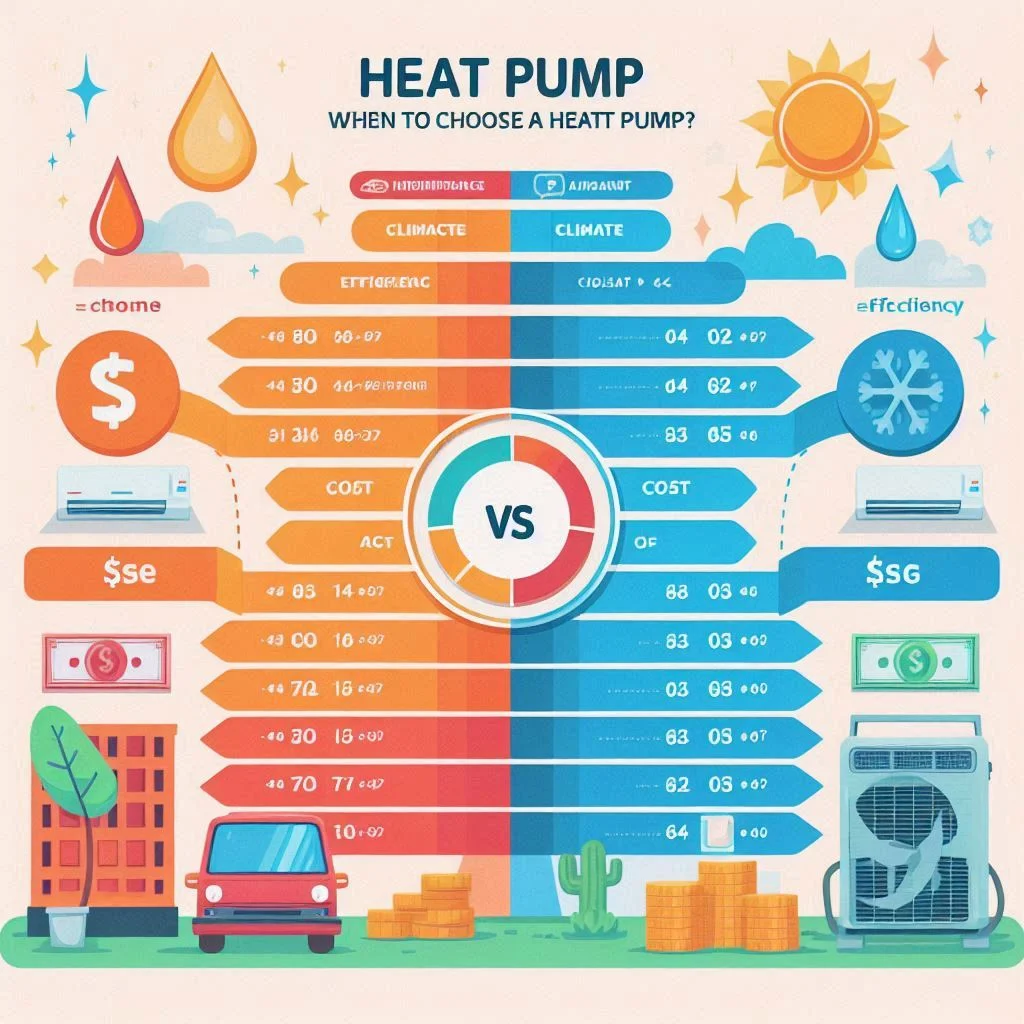
Why Are Heat Pumps More Energy Efficient?
Heat pumps have become a top choice for energy-efficient heating and cooling, offering significant savings compared to traditional air conditioners and furnaces. Their efficiency comes from transferring heat rather than generating it, reducing energy consumption and environmental impact. In this guide, we’ll explore how heat pumps work, their cost-saving benefits, and why they are a more sustainable solution.
How Heat Pumps Transfer Heat Instead of Generating It
🔹 The Key Difference: Heat Pumps Move Heat, Not Create It
Unlike furnaces or electric heaters that burn fuel or use resistance heating to generate heat, a heat pump simply transfers heat from one place to another.
How the Heat Pump Process Works:
In Heating Mode: The heat pump extracts heat from outdoor air (even in cold weather) and transfers it inside.
In Cooling Mode: It removes heat from indoors and releases it outside, just like a traditional air conditioner.
The Reversing Valve: This special component allows the system to switch between heating and cooling modes.
Why This Saves Energy:
Since a heat pump doesn’t need to produce heat (like a furnace burning gas or oil), it requires far less energy to operate.

Energy Savings Compared to Traditional ACs and Furnaces
How Efficient Are Heat Pumps?
Heat pumps are significantly more energy-efficient than traditional heating and cooling systems. Here’s why:
- SEER (Cooling Efficiency Rating) – Modern heat pumps have high SEER ratings, making them just as efficient as top air conditioners.
- HSPF (Heating Efficiency Rating) – Heat pumps use much less energy than gas furnaces to heat a home in moderate climates.
- COP (Coefficient of Performance) – While electric heaters have a COP of 1 (meaning they produce 1 unit of heat per unit of energy), heat pumps can have a COP of 3-5, meaning they provide 3-5 times more heat than the electricity they consume.
Cost Savings Over Time
Lower Electricity Bills – Since heat pumps use less power than electric heaters and gas furnaces, they reduce monthly energy costs.
Fewer Maintenance Needs – Heat pumps have fewer moving parts than furnaces, leading to lower maintenance expenses.
One System Instead of Two – Instead of buying a separate AC and furnace, a heat pump does both jobs, saving installation and equipment costs.
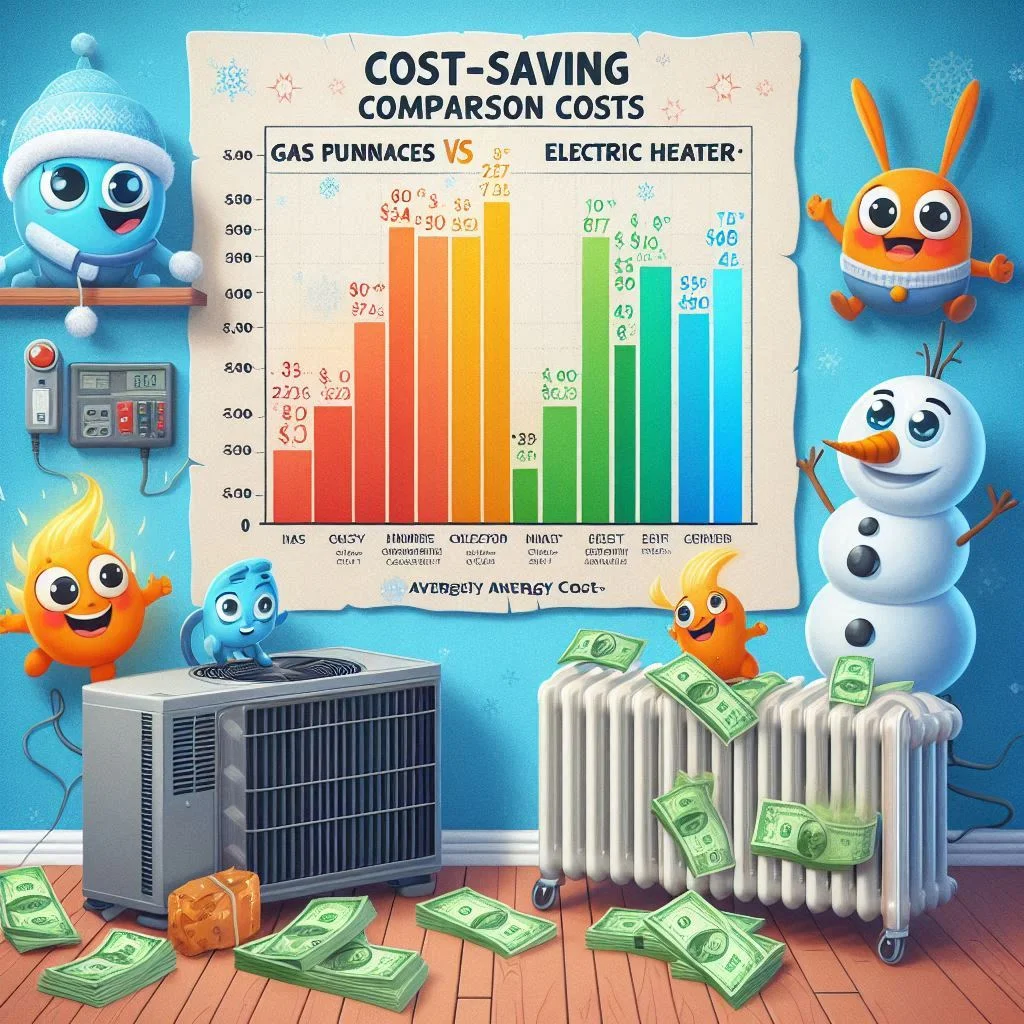
Environmental Benefits and Sustainability
How Heat Pumps Reduce Carbon Footprint
Since heat pumps don’t burn fossil fuels like gas furnaces, they significantly lower greenhouse gas emissions.
Reduced Carbon Emissions – Heat pumps reduce CO₂ output, contributing to cleaner air.
Uses Renewable Energy Sources – Can be powered by solar or wind energy, making them even more eco-friendly.
Less Strain on Power Grids – Their high efficiency means less demand on electrical infrastructure, reducing the need for additional power plants.
Government Incentives for Heat Pumps
Many governments are promoting heat pump adoption by offering:
Tax credits and rebates for energy-efficient home upgrades.
Sustainability grants for reducing carbon footprints.
Renewable energy incentives when paired with solar panels.
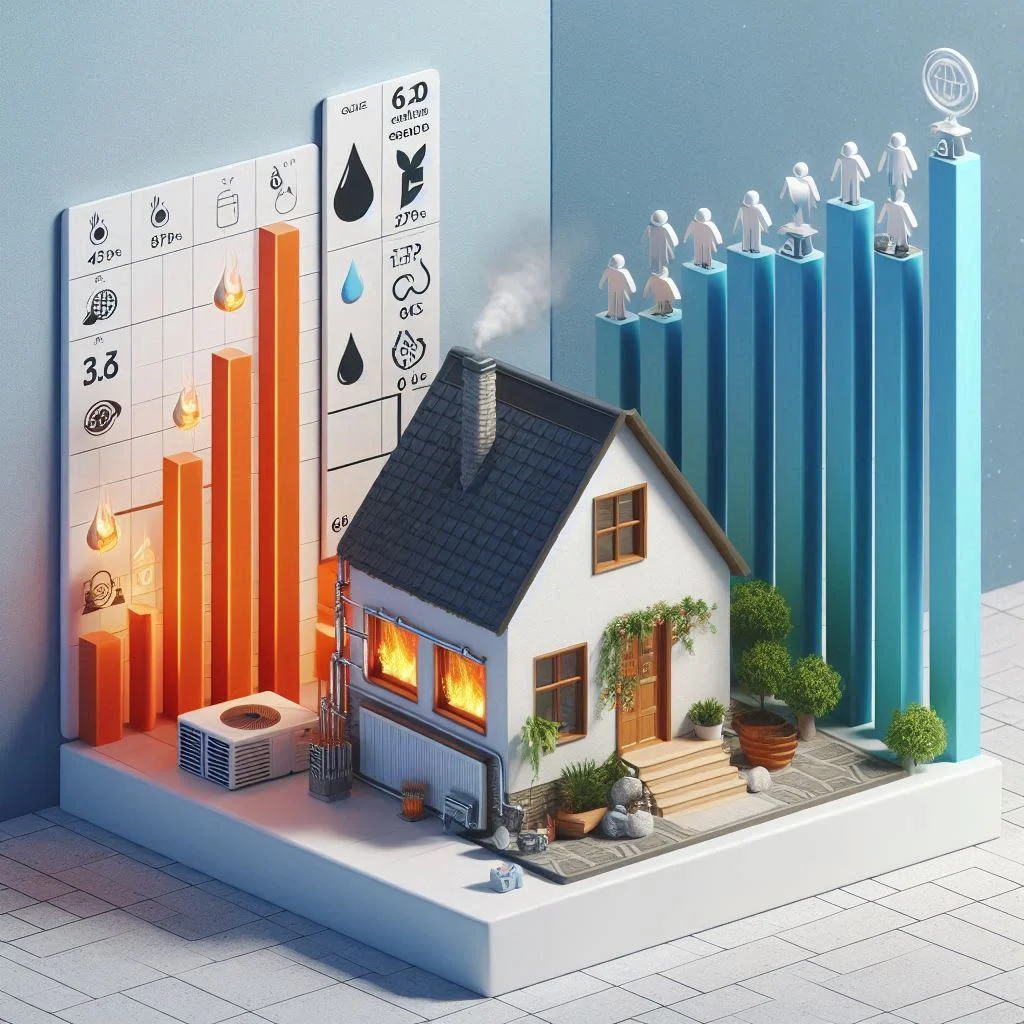
Heat Pumps vs. Air Conditioners: Which One Is Best for You?
Choosing between a heat pump and an air conditioner depends on several factors, including climate, energy efficiency, installation costs, and long-term maintenance. While both systems can cool your home efficiently, heat pumps have the added advantage of providing heating in colder months. Let’s break down the key differences and help you decide which one is best for your home.
Factors to Consider When Choosing Between a Heat Pump and an AC
Before deciding, you should consider key factors such as:
Heating & Cooling Needs – Do you need heating as well as cooling?
Climate Suitability – Is your region’s winter mild or extremely cold?
Energy Efficiency – Which option will save more on electricity bills?
Upfront Cost vs. Long-Term Savings – Which system has the best return on investment?
Maintenance Requirements – How often do you want to service your unit?

Climate Considerations for Heat Pump Efficiency
Heat Pumps Work Best in Mild Winters
- Ideal for regions where winter temperatures stay above 30°F (-1°C).
- More efficient than gas furnaces in moderate climates because they transfer heat instead of generating it.
- Lose efficiency in extreme cold, requiring a backup heating system in freezing climates.
Air Conditioners Are Ideal for Hot Climates
- Best for locations where heating is rarely needed.
- If you already have a separate heating system (like a furnace), an AC is a better choice.
- Air conditioners perform well in all climates for cooling, but they cannot provide heating.
Key Takeaway: If you live in a warm or mild climate, a heat pump is the most efficient choice. In very cold climates, an air conditioner combined with a furnace may be better.
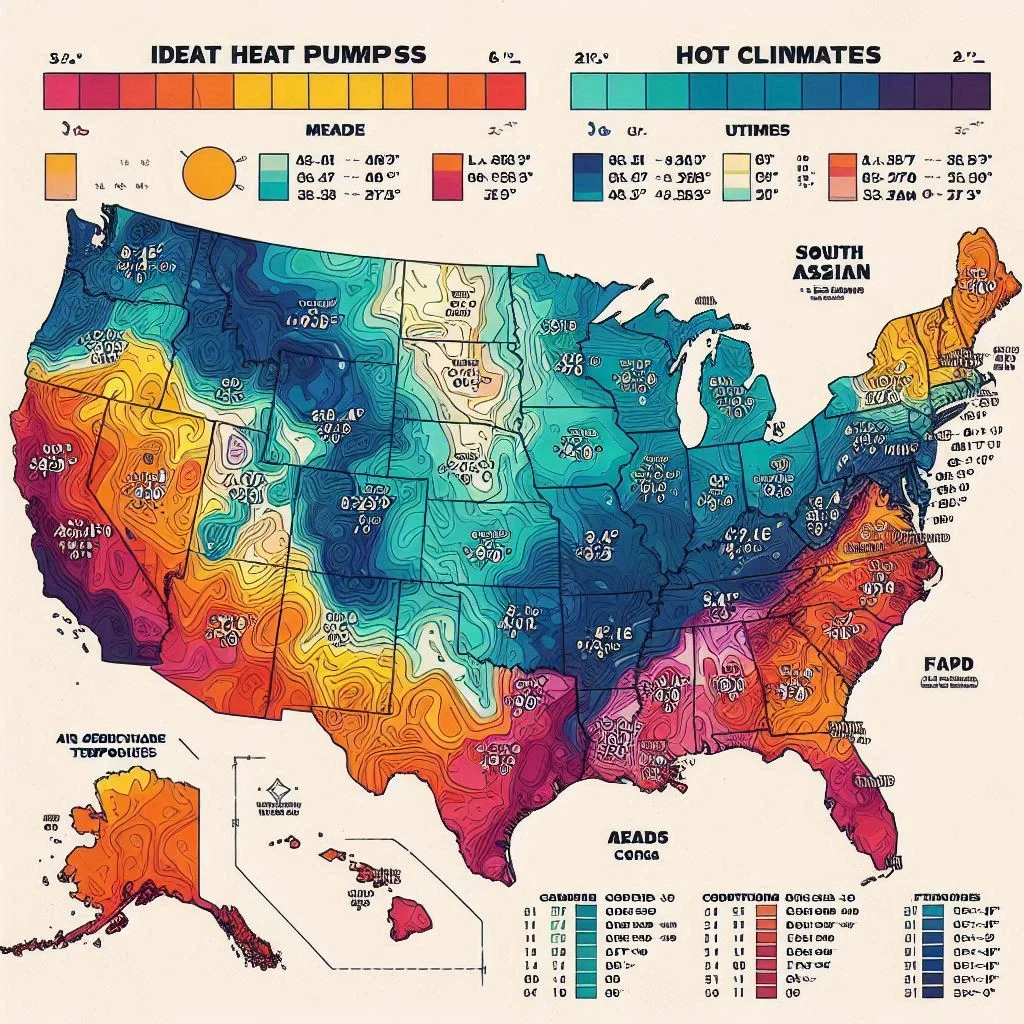
Cost, Installation, and Maintenance Comparison
Upfront Cost & Installation
Air Conditioners
- Lower initial cost than heat pumps.
- Installation is straightforward if replacing an existing AC unit.
Heat Pumps
- Higher upfront cost due to dual functionality (heating & cooling).
- May require additional installation if replacing a furnace/AC combo.
Energy Efficiency & Long-Term Savings
Heat Pumps Save More in the Long Run
- Heat pumps use less electricity for heating than traditional electric heaters or gas furnaces.
- Can reduce annual energy costs by 30-40% compared to separate AC and heating systems.
Air Conditioners Are Cost-Effective for Cooling Only
- If you don’t need heating, an AC system is cheaper to install and costs less in the short term.
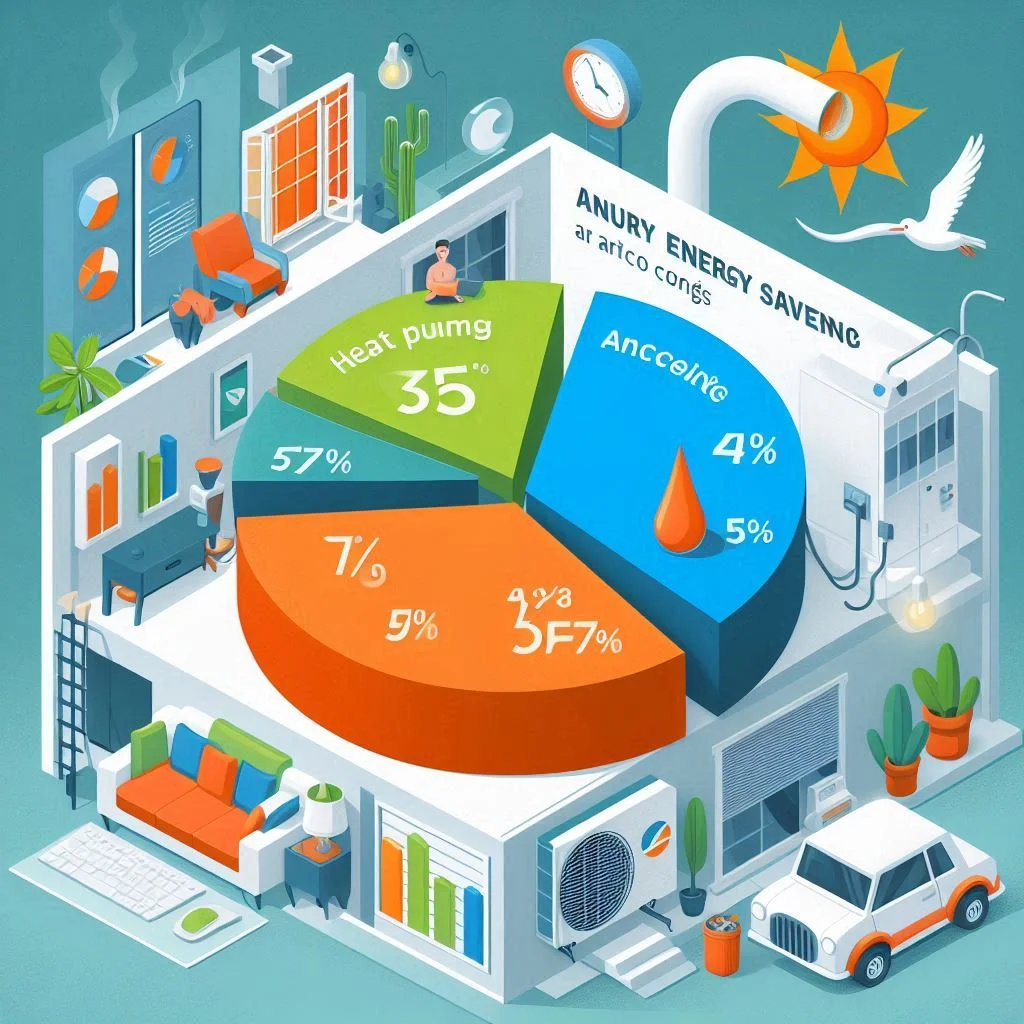
Maintenance & Lifespan
Heat Pumps
- Need twice-a-year servicing (before summer & winter).
- Have more moving parts because they work year-round, leading to faster wear and tear.
Air Conditioners
- Require annual maintenance before summer.
- Typically last longer than heat pumps because they are used only for part of the year.
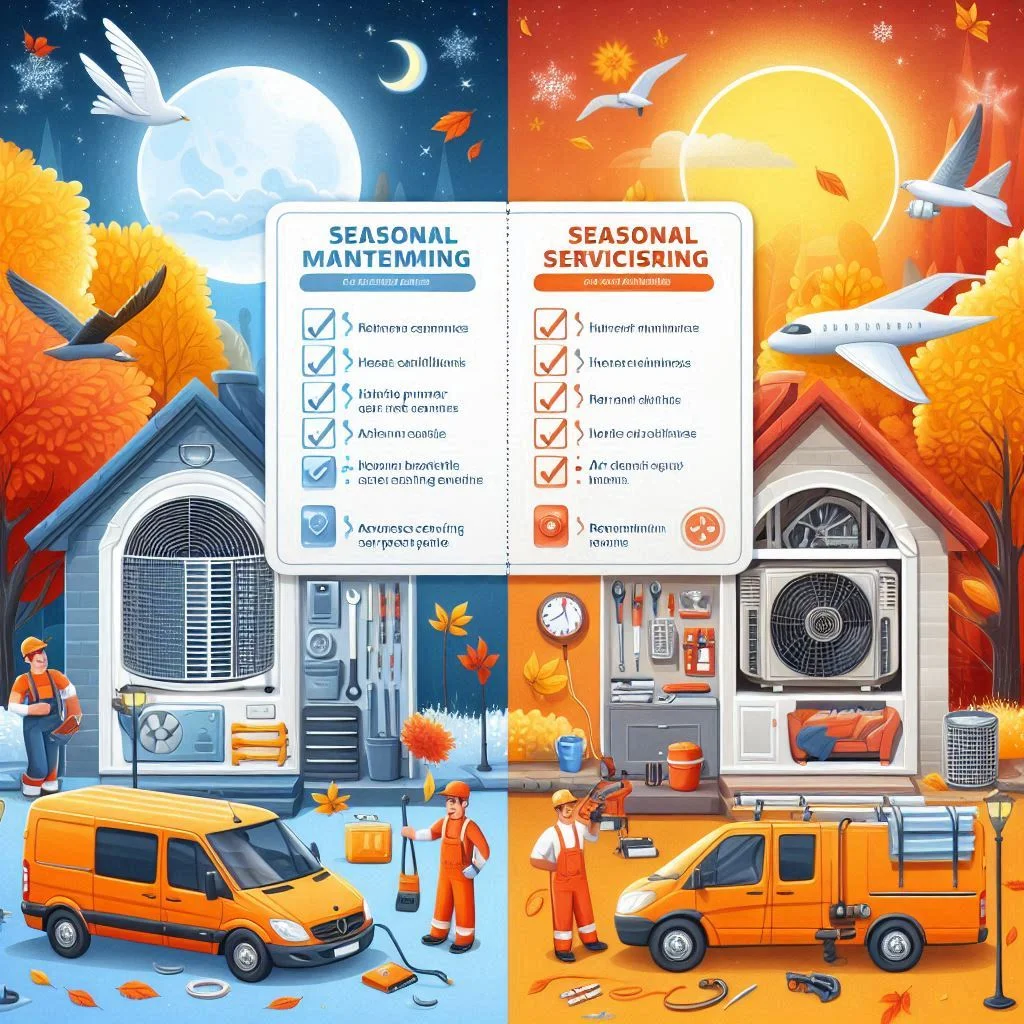
Learn More: Energy Efficiency and Home Savings
Energy efficiency is a key factor in reducing electricity costs and creating a sustainable home environment. Heat pumps are among the most energy-efficient HVAC systems, offering both heating and cooling while consuming significantly less electricity than traditional furnaces and air conditioners. In this guide, we’ll explore how heat pumps contribute to energy savings, the best home upgrades for efficiency, and government incentives like the Inflation Reduction Act that can help homeowners save even more.
How Heat Pumps Contribute to Energy Savings
Heat Pumps Use Less Energy Than Traditional HVAC Systems
Unlike traditional gas furnaces and electric heaters, which generate heat, heat pumps transfer heat from one place to another. This process requires far less electricity, leading to lower utility bills.
Key Energy-Saving Features of Heat Pumps:
High SEER & HSPF Ratings – Modern heat pumps have high Seasonal Energy Efficiency Ratio (SEER) and Heating Seasonal Performance Factor (HSPF) ratings, ensuring maximum energy efficiency.
Variable-Speed Compressors – Many heat pumps use inverter technology that adjusts power levels based on demand, reducing wasted energy.
Dual-Function System – Since heat pumps both heat and cool, homeowners don’t need separate systems for winter and summer, leading to additional savings.
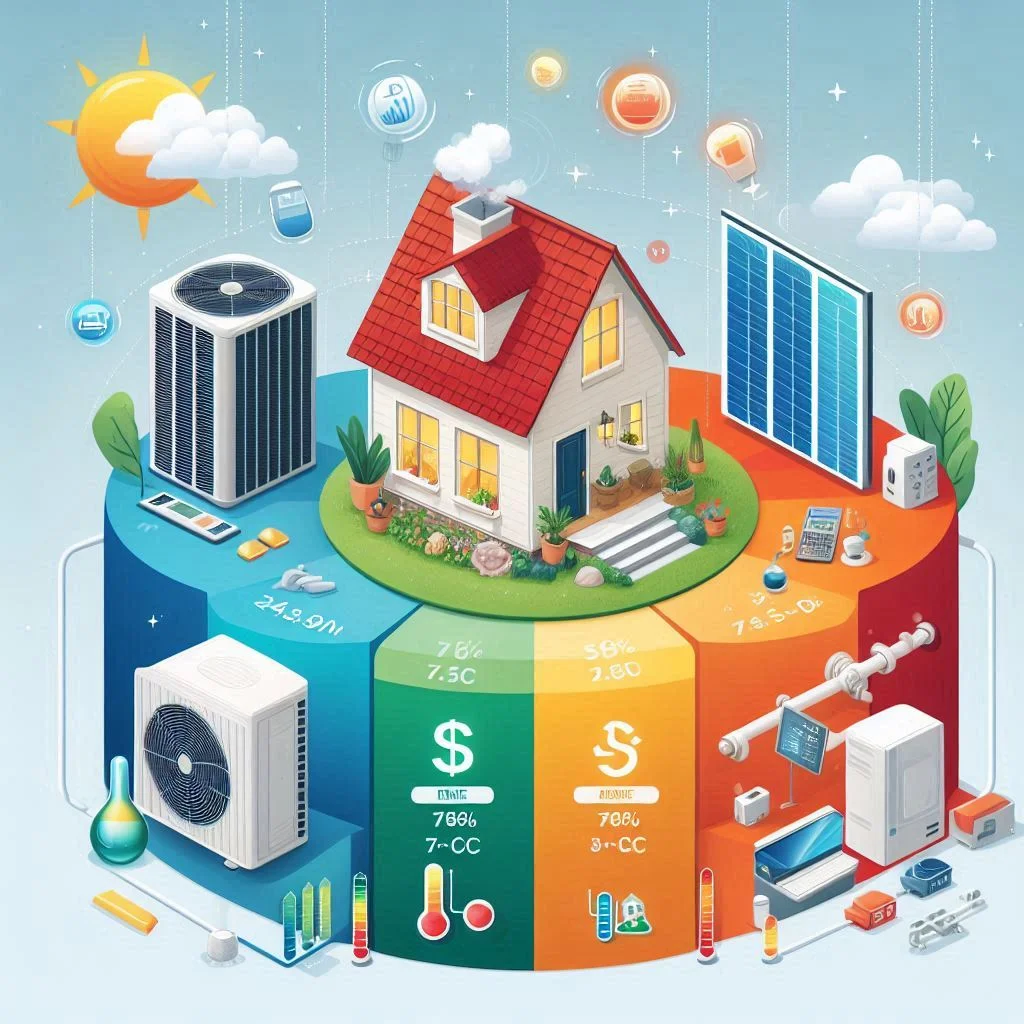
Overview of Energy-Efficient Home Upgrades
In addition to heat pumps, other energy-efficient home upgrades can further reduce electricity bills and enhance indoor comfort.
Top Energy-Saving Home Improvements:
Smart Thermostats – Automatically adjust heating and cooling settings for optimal energy use.
Better Insulation & Sealing – Reduces heat loss in winter and keeps cool air inside during summer.
Energy-Efficient Windows – Minimizes heat gain, reducing the workload on HVAC systems.
LED Lighting – Uses 75% less energy than traditional bulbs and lasts longer.
Solar Panels – Can power a heat pump for nearly zero-cost heating and cooling.
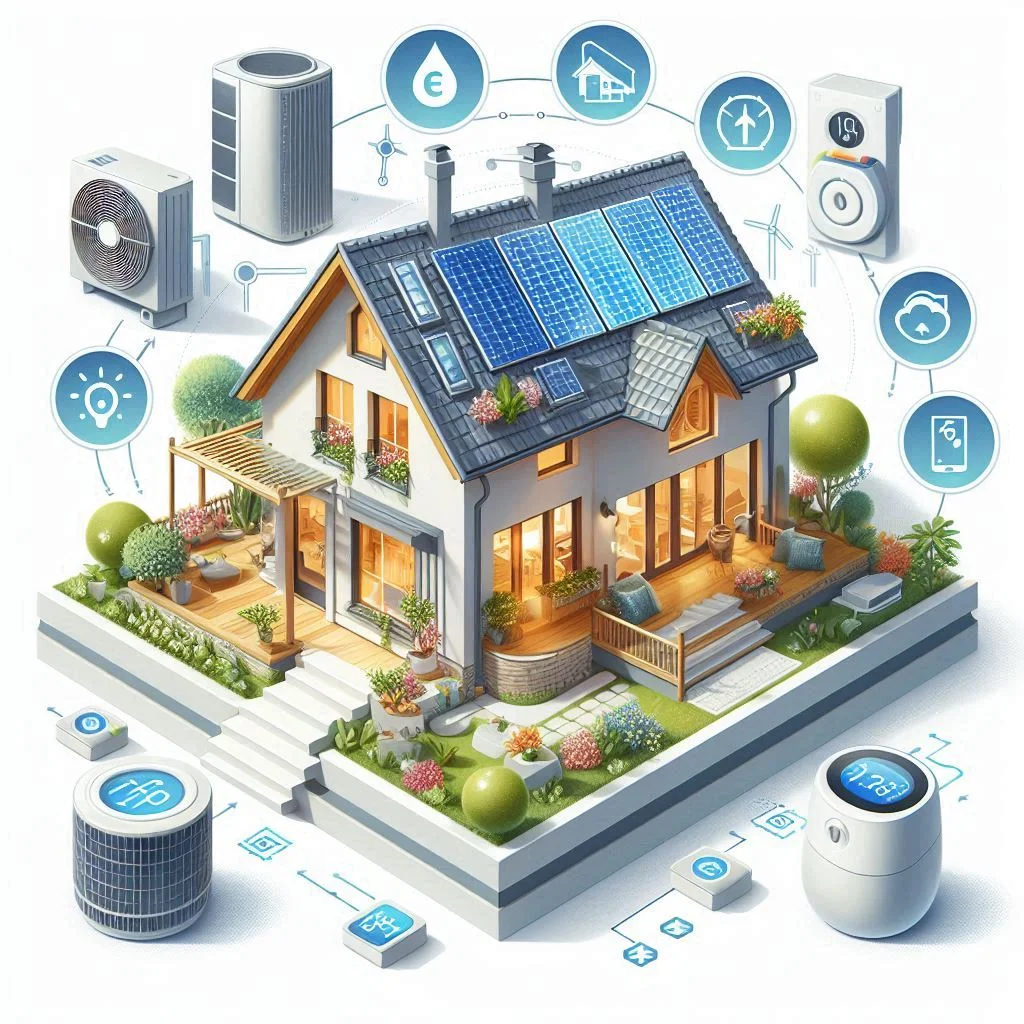
Government Incentives Like the Inflation Reduction Act
To encourage energy-efficient home improvements, governments provide financial incentives that make upgrading to heat pumps and other sustainable technologies more affordable.
What Is the Inflation Reduction Act?
The Inflation Reduction Act (IRA) is a U.S. government initiative designed to:
Lower energy costs for homeowners through rebates and tax credits.
Encourage energy-efficient home upgrades like heat pumps and solar panels.
Reduce carbon emissions by promoting clean energy solutions.
Heat Pump Rebates & Tax Credits
Federal Tax Credit – Homeowners can receive a 30% tax credit (up to $2,000) for installing an energy-efficient heat pump.
State Rebates – Some states offer additional rebates up to $8,000 depending on household income.
Utility Company Incentives – Many local electric companies provide rebates for switching to heat pumps.
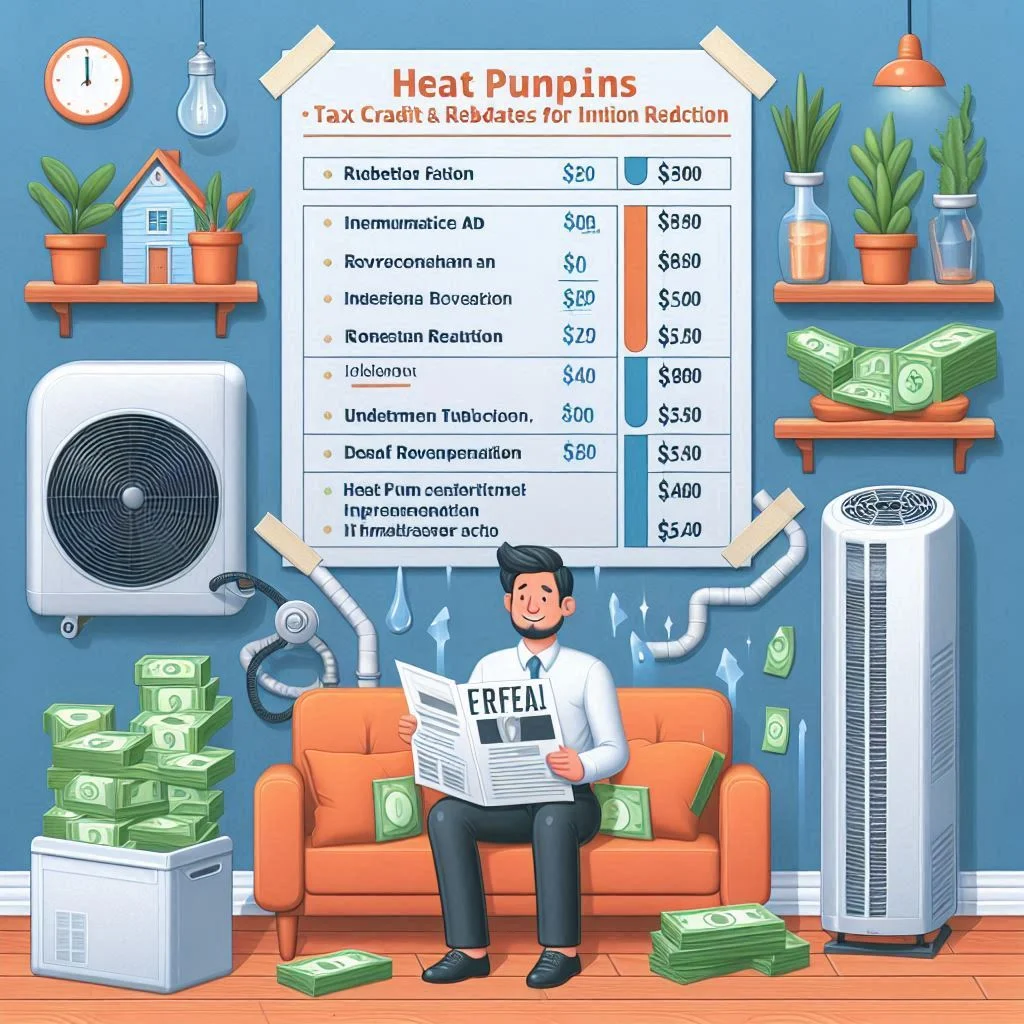
FAQs About Heat Pumps and Air Conditioners
To help homeowners make informed decisions about heat pumps and air conditioners, we’ve compiled answers to some of the most frequently asked questions. These cover efficiency, cost savings, maintenance, and government incentives, ensuring you get the best performance from your HVAC system.
1. Is a heat pump the same as an air conditioner?
No, but they work similarly. A heat pump and an air conditioner both cool your home using the same refrigeration cycle. However, a heat pump can also reverse its function to provide heating in the winter, making it a more versatile system.
Best for: Homes in moderate climates where winters are not extremely cold.
AC is better if: You already have a separate heating system, like a furnace.
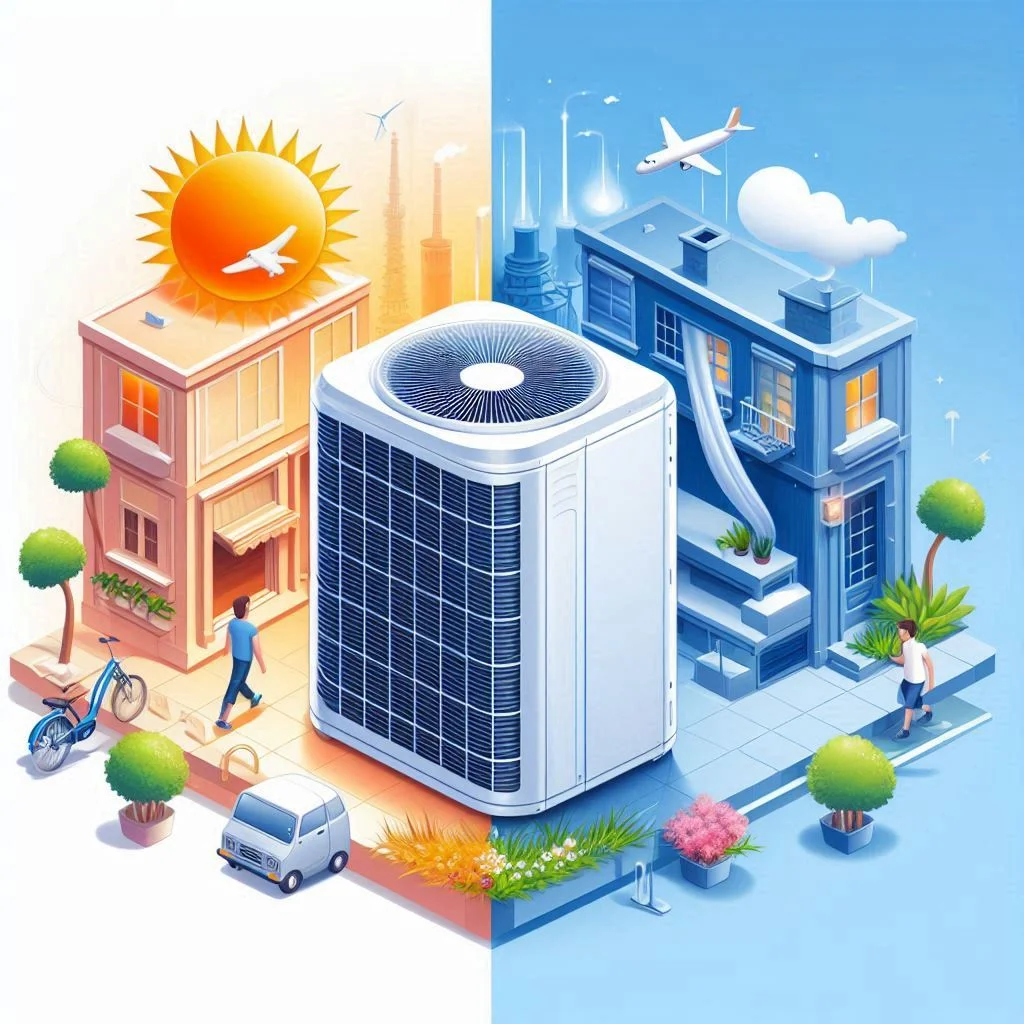
2. Are heat pumps really more energy-efficient than traditional heating and cooling systems?
Yes! Heat pumps are up to 3-5 times more efficient than gas furnaces or electric resistance heaters. Instead of burning fuel to generate heat, they transfer heat, consuming far less energy.
Key Energy-Saving Benefits:
Reduces electricity bills by 30-40% compared to traditional HVAC systems.
Uses renewable heat from outdoor air, even in winter.
Lower carbon emissions, making it an eco-friendly choice.
3. How much does a heat pump cost compared to an air conditioner?
Upfront cost: A heat pump is usually 10-20% more expensive than an AC because it includes heating functionality.
Long-term savings: Heat pumps reduce heating costs, leading to lower energy bills over time.
Cost Breakdown:
Air Conditioner: $3,000 – $7,000 (installation included).
Heat Pump: $4,000 – $10,000 (installation included).
Annual Savings: $500 – $1,000 in heating costs for heat pumps.
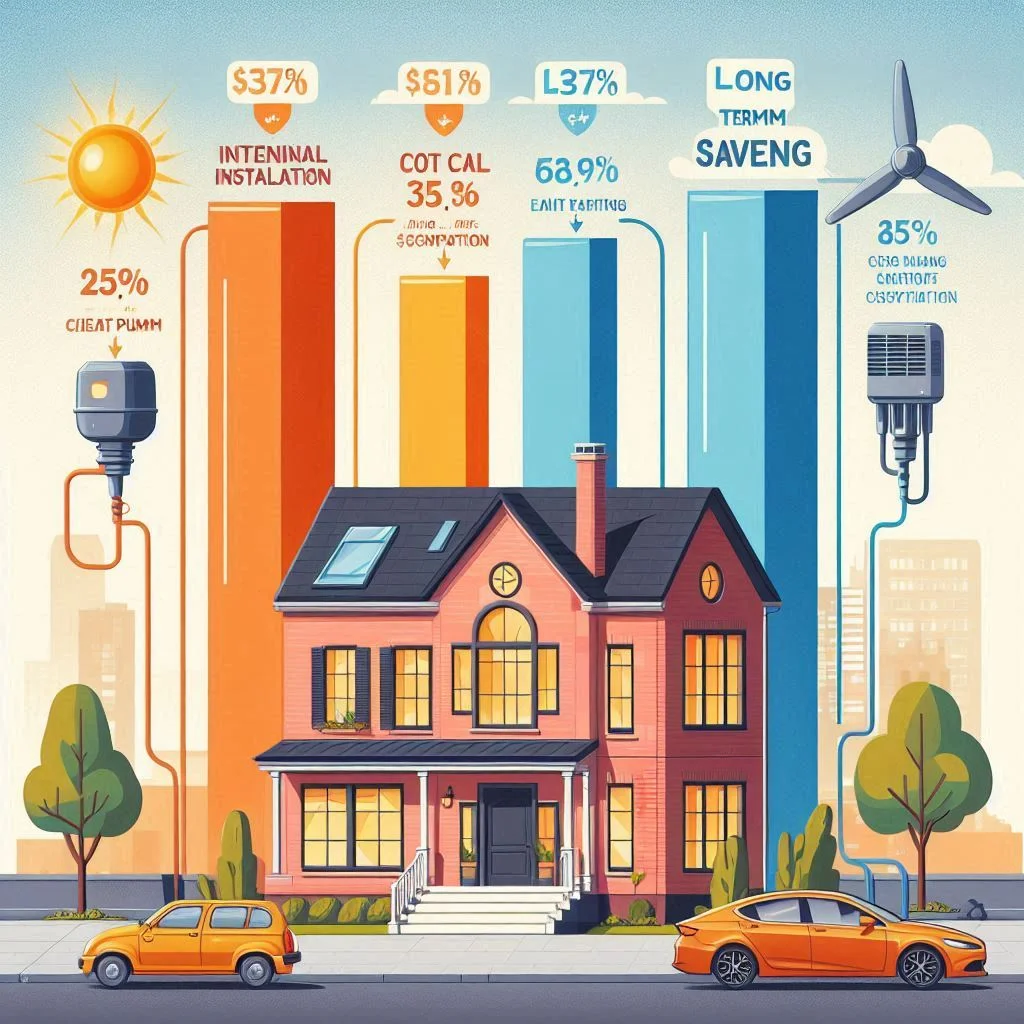
4. Do heat pumps work in cold weather?
Yes, modern heat pumps can work efficiently in freezing temperatures! Older heat pumps struggled in below-freezing climates, but today’s cold-climate heat pumps can extract heat from the air even in temperatures as low as -10°F (-23°C).
Solution: If you live in an extremely cold area, a heat pump can be paired with a gas furnace in a dual-fuel system for backup heating.
5. What maintenance is required for a heat pump?
Heat pumps require regular maintenance, just like air conditioners, but since they run year-round, they need servicing twice a year.
Heat Pump Maintenance Checklist:
Clean the air filters every 1-2 months.
Inspect and clean the outdoor unit to remove debris.
Check refrigerant levels for efficiency.
Schedule professional servicing before summer and winter.
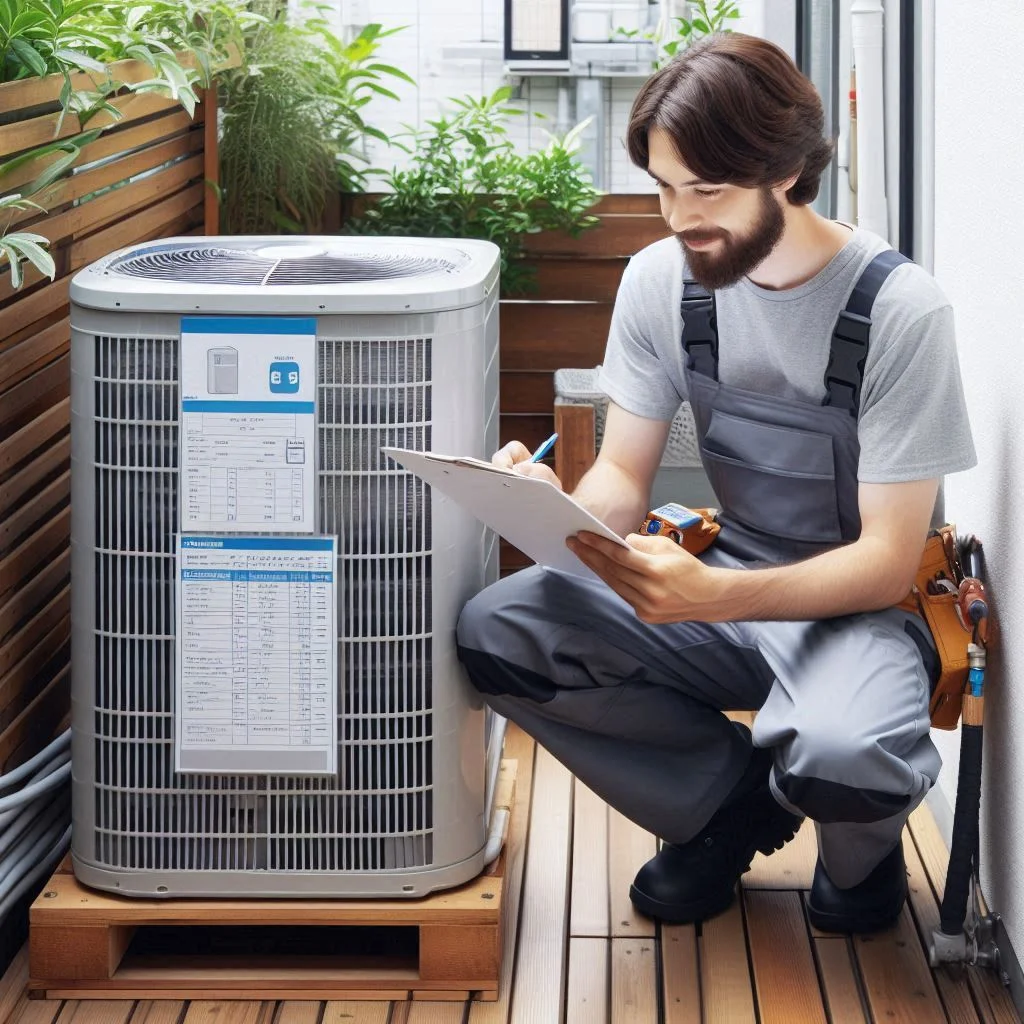
6. Can I get a rebate or tax credit for installing a heat pump?
Yes! The U.S. government and many local utility companies offer rebates and tax incentives for upgrading to energy-efficient heat pumps.
Available Incentives:
Federal Tax Credit – Up to $2,000 for installing a qualifying heat pump.
State Rebates – Varies by state, up to $8,000 in savings.
Utility Rebates – Local energy providers may offer additional discounts.
Check with your local energy provider to find out what incentives are available in your area!
7. Should I replace my air conditioner with a heat pump?
If your AC is old or you’re looking to reduce heating costs, switching to a heat pump can be a smart investment.
Consider a Heat Pump If:
Your AC is 10+ years old and due for replacement.
You want to save money on heating costs.
Your climate has mild to moderate winters where a heat pump is effective.

Conclusion
Choosing between a heat pump and an air conditioner depends on factors like climate, energy efficiency, upfront costs, and long-term savings. While both systems provide effective cooling, a heat pump offers year-round comfort by also providing heating, making it a more versatile and energy-efficient option for many homeowners. Additionally, government incentives like the Inflation Reduction Act make upgrading to a heat pump more affordable than ever. Whether you’re looking to cut energy costs, reduce your carbon footprint, or invest in a sustainable HVAC system, a heat pump is a smart and eco-friendly choice for the future of home heating and cooling.

